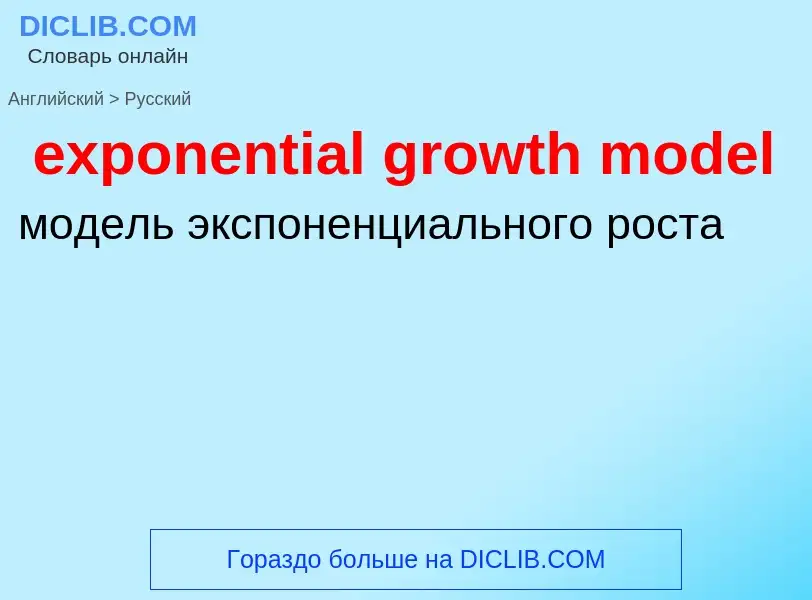Translation and analysis of words by ChatGPT artificial intelligence
On this page you can get a detailed analysis of a word or phrase, produced by the best artificial intelligence technology to date:
- how the word is used
- frequency of use
- it is used more often in oral or written speech
- word translation options
- usage examples (several phrases with translation)
- etymology
exponential growth model - translation to russian
общая лексика
экспоненциальный рост
экспоненциальная фаза роста
общая лексика
геометрический рост
геометрическое приращение
Definition
Wikipedia
Population growth is the increase in the number of people in a population or dispersed group. Actual global human population growth amounts to around 83 million annually, or 1.1% per year. The global population has grown from 1 billion in 1800 to 7.9 billion in 2020. The UN projected population to keep growing, and estimates have put the total population at 8.6 billion by mid-2030, 9.8 billion by mid-2050 and 11.2 billion by 2100. However, some academics outside the UN have increasingly developed human population models that account for additional downward pressures on population growth; in such a scenario population would peak before 2100.
World human population has been growing since the end of the Black Death, around the year 1350. A mix of technological advancement that improved agricultural productivity and sanitation and medical advancement that reduced mortality increased population growth. In some geographies, this has slowed through the process called the demographic transition, where many nations with high standards of living have seen a significant slowing of population growth. This is in direct contrast with less developed contexts, where population growth is still happening. Globally, the rate of population growth has declined from a peak of 2.2% per year in 1963. The global human population is projected to peak during the mid-21st century and decline by 2100.
Population growth alongside increased consumption is a driver of environmental concerns, such as biodiversity loss and climate change, due to overexploitation of natural resources for human development. International policy focused on mitigating the impact of human population growth is concentrated in the Sustainable Development Goals which seek to improve the standard of living globally while reducing the impact of society on the environment while advancing human well being.

![World human population estimates from 1800 to 2100, with estimated range of future population after 2020 based on "high" and "low" scenarios. Data from the [https://population.un.org/wpp/ United Nations projections in 2019]. World human population estimates from 1800 to 2100, with estimated range of future population after 2020 based on "high" and "low" scenarios. Data from the [https://population.un.org/wpp/ United Nations projections in 2019].](https://commons.wikimedia.org/wiki/Special:FilePath/Human population since 1800.png?width=200)
![[[Bangladesh]] is one of the most densely populated countries in the world. The capital, [[Dhaka]], bustles around Nilkhet Mor. [[Bangladesh]] is one of the most densely populated countries in the world. The capital, [[Dhaka]], bustles around Nilkhet Mor.](https://commons.wikimedia.org/wiki/Special:FilePath/Nilkhet Mor in Dhaka by Nahid 02.jpg?width=200)
